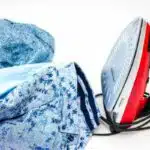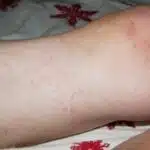High-performance activewear is like a finely tuned race car: it requires regular maintenance to continue performing at its best. If you’re serious about your workout routine, investing in high-quality activewear is a must. However, if you want to keep your gear looking and performing like new, you need to know how to properly clean and care for it.
Cleaning and caring for high-performance activewear is not as simple as tossing it in the washing machine with your everyday clothes. These garments are designed to wick away moisture, regulate body temperature, and prevent chafing. Therefore, they require specific care instructions to maintain their performance-enhancing properties. In this article, we will discuss the best practices for cleaning and caring for high-performance activewear so that you can get the most out of your investment while staying comfortable and stylish during your workouts.
Understanding Your Activewear Fabric
Activewear fabric types vary widely, and it’s important to understand the specific type of fabric your activewear is made from. Common fabrics used in activewear include polyester, nylon, spandex, and cotton blends. Each fabric has its own unique properties that determine how it should be cared for.
Polyester is a common choice for activewear because it’s durable and moisture-wicking. Nylon is also a popular option due to its strength and resilience. Spandex is often blended with other fabrics to add stretch and flexibility, making it an ideal choice for form-fitting garments. Cotton blends are soft and comfortable but tend to absorb sweat rather than wick it away.
Understanding fabric care symbols is essential when caring for your activewear. These symbols are typically found on the tags of your clothing and provide information on how to properly clean and care for the garment. It’s important to follow these instructions as they can help prevent damage to your clothing and ensure longevity.
With this knowledge of different activewear fabric types and understanding fabric care symbols you’ll be equipped to properly care for your high-performance activewear, ensuring that you get the most out of each piece. To start taking care of your clothes correctly, the first step is sorting your laundry appropriately.
Sorting Your Activewear Laundry
Imagine you’ve just finished an intense workout, and your activewear is drenched in sweat. You know that it’s essential to wash them right away, but do you know how to sort them? Sorting your activewear laundry is crucial to ensure they retain their quality over time. One common technique is to color-code your clothes based on the type of fabric.
To properly sort your activewear laundry, follow these four steps:
- Sort by color – group bright colors with bright colors, dark with dark.
- Group by fabric type – separate cotton from synthetic fabrics like polyester and nylon.
- Check the care labels – some items may require special washing instructions or should only be washed with certain fabrics.
- Separate heavily soiled pieces – clothes that are particularly sweaty or muddy should be washed separately from other items.
Once you’ve sorted your laundry, it’s time to fold them properly before storing them away. Proper folding techniques will help maintain the shape and elasticity of the garments, especially if they have compression features. Fold each piece neatly and avoid hanging them as this can stretch out the fabric unnecessarily.
In summary, sorting your activewear laundry is an important step in caring for high-performance garments. By following simple yet effective techniques like activewear color coding and proper folding techniques, you can ensure that your clothes remain in good condition for longer periods of time. The next step in keeping your activewear looking its best is pre-treating stains before washing.
Pre-Treating Stains
Stains can be a real frustration for those who take pride in their high-performance activewear. However, with the right pre-treatment techniques, it is possible to remove most stains effectively. The key is to act quickly and use appropriate products.
The first step in pre-treating stains is to identify the type of stain you’re dealing with. Different stains require different treatments, so it’s important to know what you’re dealing with before you begin. Some common types of stains include sweat, oil, blood, and grass. Once you’ve identified the stain, you can begin treatment.
For sweat and oil stains, applying a pre-wash stain remover is usually effective. For stubborn stains like blood or grass, a combination of hydrogen peroxide and dish soap can do wonders. Mix one part hydrogen peroxide with two parts dish soap and apply the mixture directly to the stain. Let it sit for about 10 minutes before rinsing with cold water. Repeat as needed until the stain is gone.
| Stain Type | Treatment Method | Products |
|---|---|---|
| Sweat | Pre-wash stain remover | OxiClean MaxForce |
| Oil | Pre-wash stain remover | Shout Advanced Stain Lifting Foam |
| Blood | Hydrogen peroxide and dish soap mixture | Hydrogen Peroxide + Dawn Dish Soap |
| Grass | Hydrogen peroxide and dish soap mixture | Hydrogen Peroxide + Dawn Dish Soap |
Moving forward into our next section, we’ll discuss the pros and cons of hand-washing vs machine-washing your high-performance activewear. It’s important to understand how each method affects your clothing so that you can make an informed decision about which method works best for your needs.
Hand-Washing Vs. Machine-Washing
When it comes to washing your high-performance activewear, you have two options: hand-washing or machine-washing. Both methods have their pros and cons, so it’s important to understand when to choose each one.
Hand-washing is a gentle method of cleaning that can help prolong the life of your activewear. It allows you to control the amount of pressure and agitation used during the cleaning process, which can prevent damage to delicate fabrics and ensure that your clothes stay in great condition. Additionally, hand-washing is a more environmentally-friendly option as it doesn’t require as much water or energy as machine-washing.
On the other hand, machine-washing is a more convenient option for those with busy schedules. It’s also a more effective way of removing tough stains and odors from your activewear. However, be aware that using a washing machine can cause wear and tear on your clothes over time if not done properly. Always use a delicate cycle with cold water and avoid using fabric softeners or bleach.
Knowing when to choose each method is crucial for maintaining the quality of your high-performance activewear. For everyday wear or light sweating, hand-washing is recommended as it will keep your clothes looking like new for longer. However, for intense workouts or heavily soiled clothing, machine-washing may be necessary to get rid of stubborn stains and dirt buildup. In the next section, we’ll discuss how choosing the right detergent can further improve the effectiveness of both hand- and machine-washing techniques.
Choosing The Right Detergent
When it comes to cleaning and caring for high-performance activewear, the choice of detergent plays a significant role in maintaining the quality of your clothes. Using the right detergent not only helps to remove dirt and sweat from your clothes but also prevents any damage to the fabric. Therefore, it is important to choose detergents that are specifically designed for high-performance activewear.
When choosing detergents, consider using eco-friendly options as they are gentle on both the environment and your clothes. Eco-friendly detergents are free from harsh chemicals and toxic substances that can cause skin irritation or allergies. Additionally, they are biodegradable and do not pollute water sources, making them a sustainable option.
Another crucial aspect is using fabric-specific detergents. Different fabrics require different washing techniques, and using a detergent that is suitable for a particular fabric ensures that it remains in good condition after each wash. For instance, some activewear fabrics require gentle washing with low-temperature water, while others can tolerate higher temperatures. It is therefore essential to read the care labels on your clothes before choosing a detergent.
By selecting eco-friendly and fabric-specific detergents when cleaning your high-performance activewear, you can prolong their lifespan and maintain their quality. In the next section, we will discuss why avoiding fabric softeners and dryer sheets is equally important in preserving your activewear’s performance properties.
Avoiding Fabric Softeners And Dryer Sheets
Did you know that fabric softeners and dryer sheets can harm your high-performance activewear? According to a study, these products can leave a residue on your clothes that reduces their moisture-wicking ability by up to 30%. This can result in increased sweating, odor, and bacteria buildup.
Instead of using fabric softeners and dryer sheets, consider using vinegar as a natural alternative. Vinegar is an effective fabric softener that does not leave any residue on clothing. It also helps to eliminate odors and kill bacteria. Simply add half a cup of white vinegar to the rinse cycle of your washing machine for best results.
The effects of fabric softeners on activewear are not only limited to reduced moisture-wicking ability. These products can also cause pilling, fading, and stretching of the fabric over time. In addition, some fabric softeners contain chemicals that can be harmful to the environment and your health. By avoiding them altogether, you are making a conscious effort towards sustainability and better health for yourself and the planet.
When it comes to cleaning and caring for high-performance activewear, every small decision counts. By using vinegar instead of fabric softeners and dryer sheets, you are taking a step towards prolonging the life of your clothes while minimizing environmental impact. In the next section, we will discuss drying methods for activewear that further promote sustainability and garment longevity.
Drying Methods For Activewear
When it comes to drying your high-performance activewear, there are two main methods to choose from: hang drying and tumble drying. Both methods have their advantages and disadvantages, so it’s important to consider which one is best for your specific needs.
Hang drying is the most gentle method of drying activewear, as it doesn’t subject the fabric to the heat and friction that can come with tumble drying. To hang dry your activewear, simply lay it flat on a clean towel or hang it up using a hanger or clothesline. This method is especially effective for delicate fabrics like spandex and nylon, which can become damaged when exposed to high temperatures.
Tumble drying, on the other hand, can be a more convenient option if you’re short on time. However, it’s important to use low heat settings and avoid over-drying your activewear, as this can cause shrinkage and damage to the fabric. If you choose to tumble dry your activewear, be sure to remove it from the dryer as soon as it’s dry and fold or hang it immediately to prevent wrinkles. Ultimately, both methods can be effective for drying activewear – just be sure to choose the one that works best for you!
Moving onto ironing and steaming – while these methods aren’t necessary for every piece of activewear, they can be useful for removing wrinkles or refreshing garments between washes. However, it’s important to check the care label of each garment before ironing or steaming it – some fabrics may not be able to handle high heat settings or direct contact with steam. In the next section, we’ll explore how to safely iron and steam your high-performance activewear without causing damage.
Ironing And Steaming
Ironing is an effective method to ensure activewear is clean and free of wrinkles. It is important to use the appropriate temperature setting on the iron and to use a press cloth to avoid damaging the fabric. When steaming activewear, it is important to keep the steamer moving at all times to avoid over-saturating the garment. Additionally, a press cloth should be used to avoid direct contact with the fabric and to protect the garment from damage.
Ironing Techniques
Understanding ironing techniques is important when it comes to caring for high-performance activewear. Ironing can help remove wrinkles and restore the garment’s shape. However, if not done correctly, ironing can cause damage to the fabric and affect its performance abilities. Therefore, it’s essential to follow proper ironing techniques to prevent any harm.
To prevent ironing damage, always use a low heat setting on the iron and avoid direct contact with the fabric. A good tip is to place a thin cotton cloth between the iron and the garment. This will protect the fabric from burning or melting due to excessive heat exposure. It’s also important to ensure that the iron is clean before using it on your activewear as dirt or residue on its surface can transfer onto your clothing.
In addition, be mindful of any embellishments or prints on your activewear while ironing. Apply heat only on areas that require pressing and avoid touching any decorations directly with the hot iron. By following these simple steps, you can maintain your high-performance activewear in excellent condition without compromising its quality or performance abilities over time.
Steaming Tips
As an expert in activewear cleaning and care, it’s crucial to understand the benefits of steaming and how to properly implement this technique into your routine. Steaming is an excellent alternative to ironing, as it can help remove wrinkles and restore the fabric’s shape without direct heat exposure. This is especially beneficial for high-performance activewear, as excessive heat can damage the fabric’s performance abilities.
To achieve the best steaming practices, start by filling your steamer with distilled water and allowing it to heat up before use. It’s important to hold the steamer nozzle at least six inches away from the garment and avoid direct contact with any embellishments or prints on your activewear. As with ironing, be mindful of any areas that require pressing and focus on those instead of applying steam to the entire garment.
Not only does steaming help maintain your high-performance activewear’s quality over time, but it also offers additional benefits such as eliminating bacteria and odors from the fabric. By incorporating proper steaming techniques into your cleaning routine, you can ensure that your activewear looks great while performing at its best during every workout or activity.
Storing Your Activewear
Now that you have invested in high-performance activewear, it is essential to take care of it properly. But what about storage? You may think that folding your clothes neatly and placing them in your closet is the best way to go. However, this could lead to damage over time.
To maximize space and prevent damage, consider hanging your activewear on hangers or hooks. This will not only provide more space but also help maintain the shape of your clothes. Additionally, avoid overcrowding your closet as it can cause fabric stretching and pilling.
Another option is to fold your activewear neatly and store them in drawers or shelves. When doing so, ensure that similar items are kept together and that heavier items are placed at the bottom to prevent crushing lighter fabrics. Moreover, make sure that the storage area is clean and dry to avoid any potential mold or mildew growth.
As crucial as proper storage is for maintaining the quality of your activewear, it won’t do much if there’s an unpleasant odor lingering on them. In the next section, we’ll explore some tips on how to deal with smells effectively without damaging your clothes.
Dealing With Smells
Odor is a common problem for high-performance activewear. After an intense workout, your clothes may have absorbed sweat and bacteria that cause unpleasant smells. Fortunately, there are natural deodorizing methods you can use to eliminate odors without damaging the fabric. Here are three effective DIY odor removers that you can make at home:
Baking soda: This versatile ingredient is a powerful odor absorber. To use it, sprinkle baking soda over your sweaty clothes and let it sit for 15-30 minutes before washing as usual. You can also add half a cup of baking soda to the rinse cycle to neutralize odors.
Vinegar: White vinegar is another natural deodorizer that can help eliminate smells from your activewear. Add half a cup of white vinegar to the rinse cycle or soak your clothes in a mixture of water and vinegar for 30 minutes before washing.
Essential oils: Some essential oils have antibacterial properties that can help kill odor-causing bacteria on your clothes. Mix a few drops of tea tree oil or lavender oil with water in a spray bottle and spritz it on your activewear before washing.
Using these natural deodorizing methods will not only remove unpleasant odors from your activewear but also save you money compared to buying chemical-based products. By incorporating these DIY odor removers into your cleaning routine, you can keep your high-performance activewear smelling fresh and clean for longer periods.
To maintain the quality and longevity of your activewear, it’s crucial to address odors promptly and effectively using natural solutions like those listed above. However, if left untreated, some stains may become more difficult to remove over time, requiring additional measures beyond just simple deodorizing treatments. In the following section, we’ll discuss tips for removing tough stains from high-performance activewear without causing any damage or discoloration to the fabric.
Tips For Removing Stains
Removing stains from high-performance activewear can be tricky, but it is important to maintain the integrity and longevity of your garments. Sweat stains are a common issue with activewear, but they can be removed with some simple tips. First, pre-treat the stain by soaking the garment in cold water mixed with a bit of laundry detergent for at least 30 minutes. Then, wash the garment in cold water on a gentle cycle with a mild detergent.
Tackling grease stains on activewear requires a different approach. Begin by removing any excess grease with a paper towel or cloth, being careful not to rub the stain further into the fabric. Next, apply a small amount of dish soap directly onto the stain and allow it to sit for several minutes before washing in cold water on a gentle cycle. If the stain persists after washing, repeat these steps or consider taking it to a professional cleaner.
To make stain removal even easier, consider using a specialized laundry detergent designed specifically for activewear. These detergents often contain enzymes that help break down sweat and other stains more effectively than traditional detergents. Additionally, using fabric softeners or dryer sheets can leave buildup on your activewear that can trap sweat and odor over time.
By properly removing stains from your high-performance activewear, you can extend their life and keep them looking and performing their best. In the next section, we will explore additional tips for extending the lifespan of your activewear through proper care and maintenance techniques.
Extending The Life Of Your Activewear
To extend the life of your high-performance activewear, proper care and maintenance are crucial. In addition to removing stains, there are various ways to prevent pilling and eliminate odors. Pilling occurs when fibers break and form small balls on the surface of the fabric, which can be prevented by avoiding friction with rough surfaces and washing in cold water.
To remove odors from activewear, it’s important to avoid fabric softeners as they can trap bacteria that cause unpleasant smells. Instead, use a detergent specifically designed for sportswear or add a cup of white vinegar to the wash cycle. Another option is to soak the clothing in a mixture of baking soda and water before washing.
In addition to these tips, there are other ways to extend the life of your activewear. One is to air dry instead of using a dryer, which can damage the fabric and cause shrinkage. Another is to store your clothing properly by hanging or folding them neatly in a drawer rather than leaving them crumpled up in a gym bag. By following these guidelines, you can keep your high-performance activewear looking and performing like new for longer.
When it comes to keeping your activewear clean, sometimes store-bought detergents aren’t enough. For those who prefer a more natural approach, making your own DIY activewear cleaner can be an effective solution. Using ingredients like baking soda, lemon juice, and essential oils, you can create a cleaning solution that’s gentle on fabrics but tough on stains and odors. With just a little bit of effort and some common household items, you can create an eco-friendly cleaning solution that keeps your activewear fresh and clean without any harsh chemicals or additives.
Diy Activewear Cleaner
When it comes to cleaning high-performance activewear, many people turn to store-bought detergents. However, these products can be expensive and may contain harsh chemicals that can damage the fabric over time. Fortunately, there are a few simple activewear cleaning hacks that you can try at home using common household ingredients.
One of the most popular DIY activewear cleaner recipes involves making your own detergent using baking soda, vinegar, and essential oils. Simply mix one cup of baking soda with half a cup of vinegar and add 10-15 drops of your favorite essential oil. This mixture can be added directly to your washing machine along with your activewear for a gentle yet effective clean.
Another easy way to care for your high-performance activewear is by using a homemade activewear detergent made from natural ingredients like castile soap and washing soda. To make this detergent, simply mix one cup of washing soda with one cup of grated castile soap and store in an airtight container. Use two tablespoons per load for a gentle but thorough clean that won’t damage the fabric or leave any residue behind.
With these simple DIY solutions, you can keep your high-performance activewear looking and feeling great without breaking the bank or resorting to harsh chemicals. So why not give them a try today? Your skin (and wallet) will thank you!
Transition: Now that we’ve covered some simple DIY solutions for cleaning high-performance activewear, let’s take a look at how you can care for your gear in an eco-friendly way.
Eco-Friendly Activewear Care
Like a flourishing plant, high-performance activewear needs proper care to thrive. However, the way we care for our clothes can have an impact on the environment. With eco-friendly activewear care, you can maintain your gear while reducing your carbon footprint. One way to do this is through upcycling activewear. Instead of tossing out old or worn-out clothes, consider repurposing them into something new and exciting. You can make a headband from an old shirt or turn leggings into arm warmers.
Another sustainable laundry practice is using cold water when washing your activewear. Hot water not only uses more energy but also breaks down the fibers in your clothes over time. Additionally, consider using plant-based detergents that are free from harsh chemicals and fragrances that can irritate sensitive skin. These products are gentle on both your skin and the environment.
By implementing these eco-friendly activewear care practices, you can take small steps towards creating a more sustainable future. Upcycling old clothing and using cold water and plant-based detergents during laundry reduces waste and minimizes harmful effects on the environment. With conscious choices like these, you can help reduce the impact of fashion on our planet.
To troubleshoot common issues with high-performance activewear, there are a few things to keep in mind. While it may be tempting to use fabric softeners or dryer sheets to soften clothes, they actually clog the pores of technical fabrics and limit their breathability over time. It’s also important to avoid using bleach or fabric whiteners as they break down the fibers in your clothes and cause them to deteriorate faster. Instead, hang dry your activewear when possible or use low heat settings in the dryer to prolong their lifespan without compromising performance capabilities.
Troubleshooting Common Issues
Taking care of high-performance activewear is crucial to ensure that it lasts longer and maintains its quality. However, even with proper care, some issues might arise. In this section, we will discuss some common problems and how you can troubleshoot them.
One of the most common issues with activewear is fading. To prevent this, always wash your activewear in cold water and avoid using bleach or fabric softeners. Additionally, turn your activewear inside out before washing to reduce friction between the fabric and the washing machine drum. It’s also recommended to hang dry your activewear instead of using a dryer as high heat can cause fading.
Another issue that may occur is pilling, which happens when fibers break and form small balls on the surface of the fabric. To prevent pilling, avoid washing your activewear with rough fabrics like denim or garments with zippers or buttons. Also, try turning your activewear inside out before washing to minimize friction between the fabric.
4 items to evoke emotion in the audience:
- Protect your investment by taking good care of your high-performance activewear.
- Don’t let fading ruin the vibrant colors of your favorite workout gear.
- Say goodbye to unsightly pills by following simple preventative steps.
- Show off your best self while feeling confident in well-maintained activewear.
Overall, taking proper care of high-performance activewear is key to ensuring its longevity and maintaining its performance capabilities. By following these preventative steps for fading and pilling issues, you can keep your workout gear looking new for longer periods while promoting sustainability through reduced clothing waste. Remember that investing in quality products means taking responsibility for their maintenance so that they continue serving you for years to come!
Conclusion
In conclusion, taking proper care of your high-performance activewear is essential to extend the life of your gear and ensure optimal performance. Understanding the fabric of your activewear, sorting laundry, pre-treating stains, and choosing the right detergent are all critical steps in maintaining your gear’s longevity. Hand-washing is preferred over machine-washing, and DIY cleaners are an excellent alternative to chemical-laden products.
Interestingly, a study found that Americans spent $370 million on activewear detergents in 2019 alone. This statistic highlights the importance of activewear care and maintenance in our society. As consumers become more conscious about environmental impact and sustainability, eco-friendly options for caring for activewear are increasingly popular.
As an expert in this field, I highly recommend investing time and effort into properly cleaning and caring for high-performance activewear. Not only can it save you money in the long run by extending the life of your gear, but it also ensures optimal performance during workouts. By following these simple steps outlined above, you can easily maintain your activewear’s quality while reducing environmental impact.
Image Credits
- “Activewear at the farmer’s market” by mild_swearwords (featured)























![How To Wash And Care For White Clothes 23 The only genuine borax soap cleanses hygienically saves the clothes and hands. 20 Mule-Team brand Boraxo white laundry soap [front]](https://green-life.blog/wp-content/uploads/2023/05/YDXLLCovnOjq-150x150.jpg.webp)





